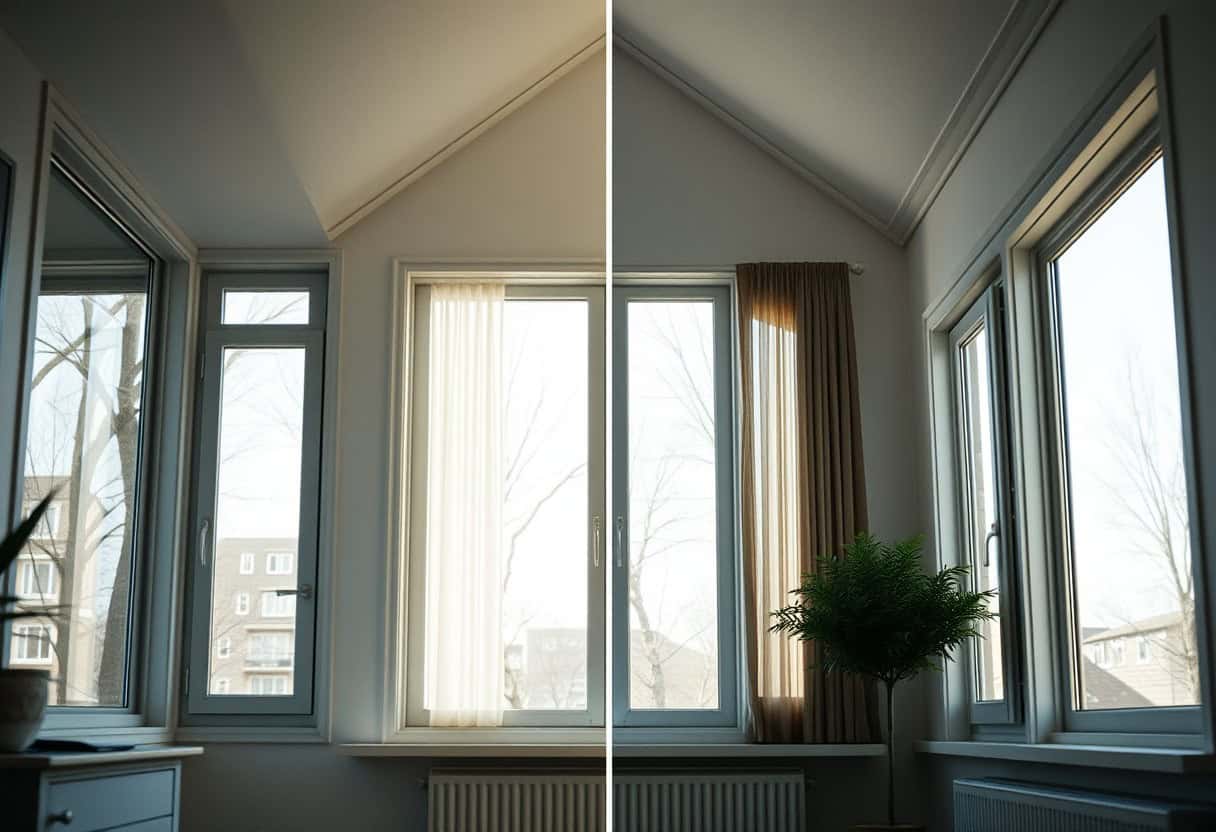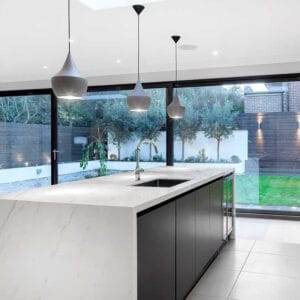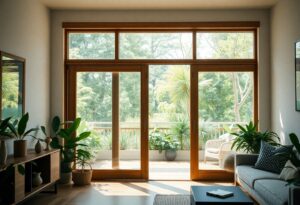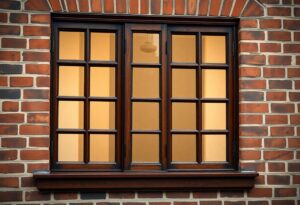It’s vital to consider your options when it comes to enhancing your home’s soundproofing. You may be weighing the benefits of soundproof windows against window inserts, and understanding the differences can help you make an informed decision. Soundproof windows offer a seamless installation and improved insulation, while window inserts provide a more cost-effective solution without replacing your existing frames. In this post, we’ll explore the advantages and drawbacks of each, helping you determine which option best suits your needs and lifestyle.
Understanding Soundproof Windows
To fully appreciate soundproof windows, it’s necessary to know their purpose and efficacy. These windows are specifically designed to reduce noise from external sources, enhancing the tranquillity of your home. For more information on options for soundproofing windows which are not double glazing, exploring alternative methods can also be beneficial in achieving a quieter environment.
Construction and Features
One of the key components of soundproof windows is their construction. These windows often feature double or triple glazing, which consists of multiple glass panes separated by layers of air or gas to minimise sound transfer. The materials used also play a significant role, with heavier glass and special laminates further dampening noise. Additionally, proper air sealing around the frame prevents sound leaks, greatly enhancing noise reduction and contributing to energy efficiency.
Benefits and Limitations
About the benefits, installing soundproof windows offers several advantages including enhanced noise control, which can greatly improve your quality of life. You might also notice an increase in property value and added UV protection for your interiors. Nevertheless, it’s necessary to consider limitations such as the cost of installation, which can be significant, along with potential installation complexity and possible aesthetic changes to your home’s appearance.
Construction of soundproof windows does involve significant investment, but the positive aspects often outweigh the drawbacks. You gain enhanced comfort and potential resale value, while your space becomes quieter and more conducive to relaxation. However, be aware of the financial commitment required, as well as the time and effort involved in installation. Weighing these factors will help you make the best decision for your living environment.
Exploring Window Inserts
Clearly, window inserts provide an effective and convenient solution for acoustic insulation. These are additional panes of glass or acrylic that you place inside your existing window frames, thus creating an extra barrier against noise. Unlike traditional soundproof windows, which are specifically designed for sound reduction during manufacture, window inserts offer a retrofit option that can be easily installed without replacing your original windows. Typically made from clear acrylic or tempered glass, they work by trapping air between the layers, significantly reducing sound transmission into your home.
What Are Window Inserts?
Beside being a retrofit option, window inserts are a flexible solution for improving sound insulation in your home. Unlike fully soundproof windows that involve extensive construction, window inserts are typically easy to install, as they can be custom-made to fit your existing frames. Materials often used include double-glazed glass or specialised acrylic, which provide extra layers to dampen noise. The installation simply requires you to fit the insert snugly against your existing window, allowing for an additional air gap that enhances sound reduction effectively.
Advantages and Disadvantages
Between the numerous advantages, window inserts are often more affordable than completely new soundproof windows, making them a popular choice for many homeowners. They are also significantly easier to install, allowing you to enhance your windows without extensive renovations. However, one should note some disadvantages; while they improve sound insulation, they may not be as effective as fully soundproof windows, and improper installation could lead to potential air leaks that might diminish their soundproofing abilities.
Consequently, the balance of advantages and disadvantages is noteworthy for anyone considering window inserts. These solutions are cost-effective and offer easy installation, making them appealing for many situations. However, you should be aware that their soundproofing capacity may fall short compared to traditional soundproof windows, and air leaks can compromise their effectiveness. Therefore, carefully weigh your options based on your specific needs before making a decision.
Comparison of Effectiveness
If you are contemplating enhancing your home’s tranquillity, it’s vital to compare the effectiveness of soundproof windows and window inserts. Below is a breakdown of their capabilities:
| Feature | Soundproof Windows |
|---|---|
| Noise Reduction | Up to 50% greater reduction compared to standard windows |
| Installation Time | Typically longer due to extensive work involved |
| Versatility | Customisable for different environments |
| Window Inserts | |
| Noise Reduction | Average reduction of 20-30% |
| Installation Time | Quick and easy to fit |
| Versatility | Can be removed and reused |
Noise Reduction Performance
Noise levels can vary significantly depending on your environment, but soundproof windows tend to provide superior attenuation in urban areas or near frequent noise sources such as roads or railways. For instance, studies show that soundproof windows can offer up to a 50% reduction in outside noise, while window inserts achieve about 20-30%. The main decision hinges on your specific noise surroundings and the level of isolation you require (opt for the solution that best meets your sound reduction needs).
Cost-Benefit Analysis
When considering installation costs, soundproof windows can be significantly more expensive than window inserts. However, in addition to reducing noise, they may enhance your home’s energy efficiency, leading to potential long-term savings on heating and cooling. Additionally, soundproof windows can positively impact your property value, making them a worthy consideration (assess the financial implications of each option in the long term).
Any investment in soundproofing should not only focus on initial costs but also on long-term benefits. While window inserts may be more budget-friendly initially, soundproof windows may provide a higher return on investment in terms of home value and energy savings (an informed choice can positively influence your living conditions).
Consequently, weighing cost, benefit, and environment is vital when deciding between soundproof windows and window inserts. Ensure you select the option that aligns best with your performance expectations and budget (the right decision will enhance your comfort significantly).
Aesthetic Considerations
For many homeowners, the aesthetic aspect of soundproof solutions is just as important as their functionality. When evaluating options, consider both Acoustic Window Inserts: Do They Really Work? and soundproof windows in terms of how they harmonise with your home’s style. While window inserts can often be added without significant alteration to your existing structure, soundproof windows may require a complete replacement that could disrupt the visual flow of your home’s design.
Design and Appearance
Before committing to soundproof solutions, ponder the design and appearance of both options. Soundproof windows typically lend a more contemporary look due to their new materials and construction, while acoustic inserts offer a less invasive way to maintain your current window aesthetics. Customisation options abound with both choices; however, the potential visual appeal concerns can arise depending on your home’s architectural style. (Choose wisely as your choice can affect your property’s overall look.)
Integration with Existing Architecture
Aesthetic integration is equally important when choosing between soundproof windows and inserts. Soundproof windows may stand out more in older, historical homes, while acoustic inserts can blend seamlessly. If you own a property under HOA regulations, confirm that your chosen option adheres to their guidelines. (Incorporating soundproof solutions wisely can enhance your home’s character.)
Architecture plays a pivotal role in how soundproof solutions are perceived. While soundproof windows may risk altering your home’s charm, acoustic inserts present a less intrusive choice, allowing you to preserve original features. In historic areas, maintaining the property’s exterior integrity is vital, and with careful selection, you can achieve noise reduction without compromising on aesthetics. Balancing soundproofing needs with architectural beauty is imperative, and your choice ultimately impacts not just your comfort but also your home’s value and appeal.

Installation and Maintenance
Once again, it’s important to consider that both soundproof windows and window inserts require varying levels of expertise for installation. Soundproof windows typically involve a complete replacement, which may demand professional installation to ensure proper sealing and fitting. In contrast, window inserts can often be installed as a DIY project, although hiring a professional can guarantee a better fit and performance. (Deciding between a professional install or DIY should be based on your skill level and confidence.)
Installation Process
Around the installation process, soundproof windows necessitate removal of your existing windows, which often requires the skills of a certified contractor. The new windows must then be securely fitted and sealed to block out noise effectively. Meanwhile, window inserts are designed as a secondary layer that fits inside your current window frames. This option generally requires less expertise, making it a popular choice for homeowners who prefer a simpler solution. (Consider what fits best with your home improvement style and budget.)
Maintenance Requirements
Before choosing between soundproof windows and window inserts, it’s crucial to be aware of their maintenance needs. Soundproof windows typically require minimal upkeep but should be inspected periodically for seal integrity to maintain their performance. Window inserts, on the other hand, necessitate cleaning to prevent dust and debris build-up that could reduce their effectiveness. Overall, both options are designed for longevity, but the level of effort for maintenance can vary. (Your decision may ultimately depend on how much time and effort you want to devote to upkeep.)
With soundproof windows, the maintenance is primarily about checking seals and cleaning glass, ensuring optimal noise reduction. On the flip side, window inserts require regular dusting and possibly resealing, as well as ensuring the inner frame remains fit to avoid air leaks. While both options should offer long-lasting results, your choice should also consider how much effort you wish to put into keeping them effective over time. (Understanding your lifestyle can help you make the best decision.)
Summing up
To wrap up, choosing between soundproof windows and window inserts depends on your specific needs and circumstances. Soundproof windows offer a permanent solution with enhanced insulation but involve a considerable investment. On the other hand, window inserts provide a cost-effective and less invasive alternative that can still significantly reduce noise. Consider factors such as your budget, the level of noise pollution in your area, and the aesthetic appeal you desire when making your decision. Whatever you choose, both options can contribute to a quieter, more comfortable living environment.
FAQ
Q: What are soundproof windows?
A: Soundproof windows are specially designed windows that aim to minimise noise transmission from the outside environment into your home. They typically feature thicker glass, insulated frames, and airtight seals to improve their noise-reducing capabilities.
Q: What are window inserts?
A: Window inserts are additional panes of glass or acrylic that are installed on the interior side of existing windows. They create an extra layer of insulation and air space, reducing noise and improving energy efficiency without the need to replace the entire window.
Q: How effective are soundproof windows compared to window inserts?
A: Soundproof windows tend to provide superior noise reduction compared to window inserts due to their design, which often incorporates multiple layers of glass and advanced sealing techniques. However, window inserts can still significantly reduce noise levels when installed properly and offer a less invasive solution.
Q: What is the cost difference between soundproof windows and window inserts?
A: Generally, soundproof windows are more expensive, as they require a complete replacement of the current window system. In contrast, window inserts are typically more affordable, as they involve only the installation of an additional layer and do not require replacement of the original window frames.
Q: Can window inserts be installed by a DIY enthusiast?
A: Yes, window inserts can often be installed by a DIY enthusiast, especially if they come with clear instructions and fittings. However, proper measurements are crucial to ensure a snug fit and maximise their noise-reduction capabilities. If unsure, consulting a professional can be beneficial.
Q: Will soundproof windows or window inserts improve energy efficiency?
A: Both soundproof windows and window inserts can enhance energy efficiency. Soundproof windows typically have excellent insulation properties, while window inserts provide an extra barrier that helps to retain heat and reduce heating costs, making both options viable for energy savings.
Q: Which option is more aesthetically pleasing: soundproof windows or window inserts?
A: This largely depends on personal preference. Soundproof windows offer a seamless finish as they replace old windows, whereas window inserts may be visible from the interior and could alter the appearance of existing window frames. It is advisable to consider how each option fits within your home’s design before making a decision.













